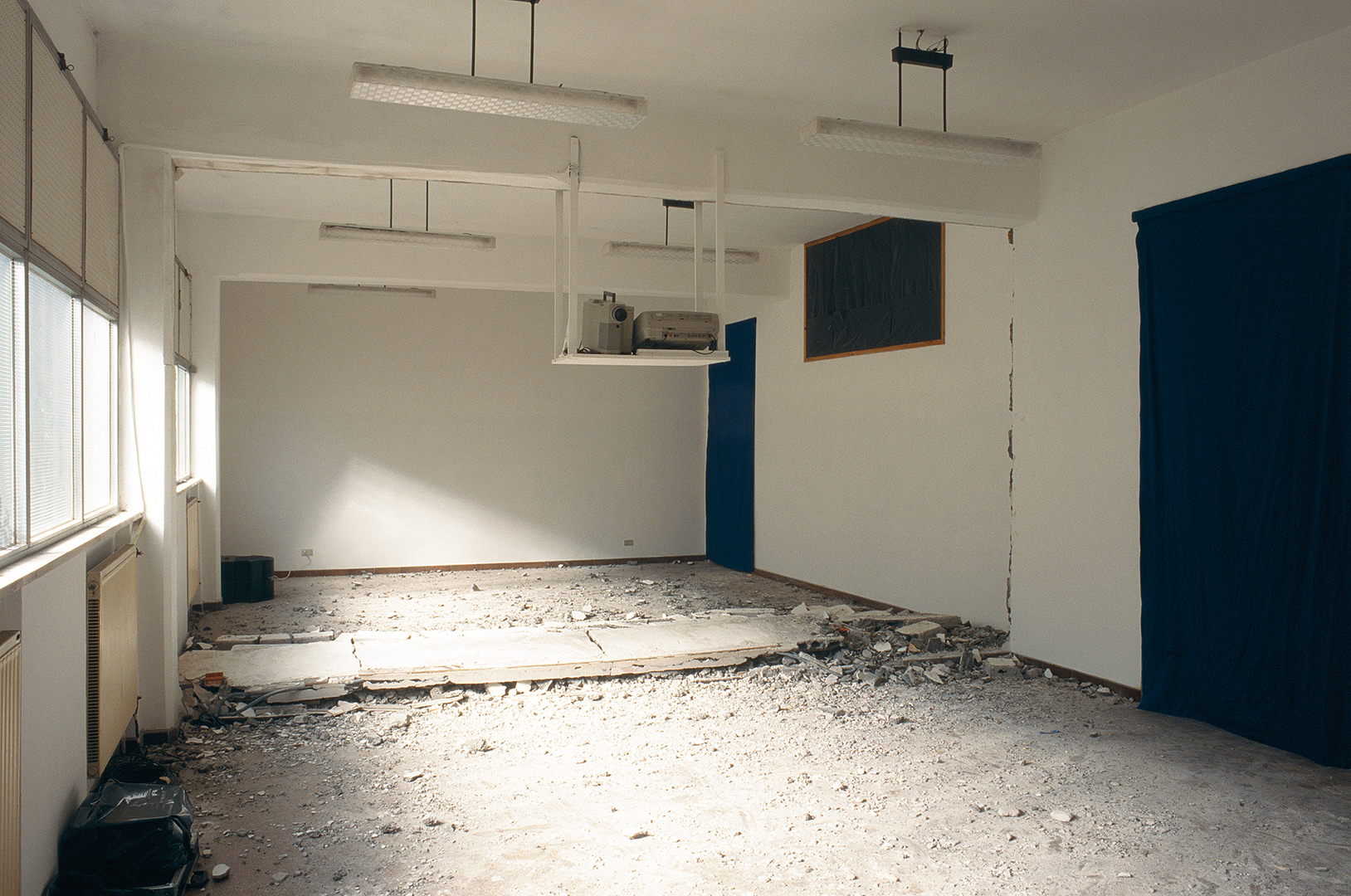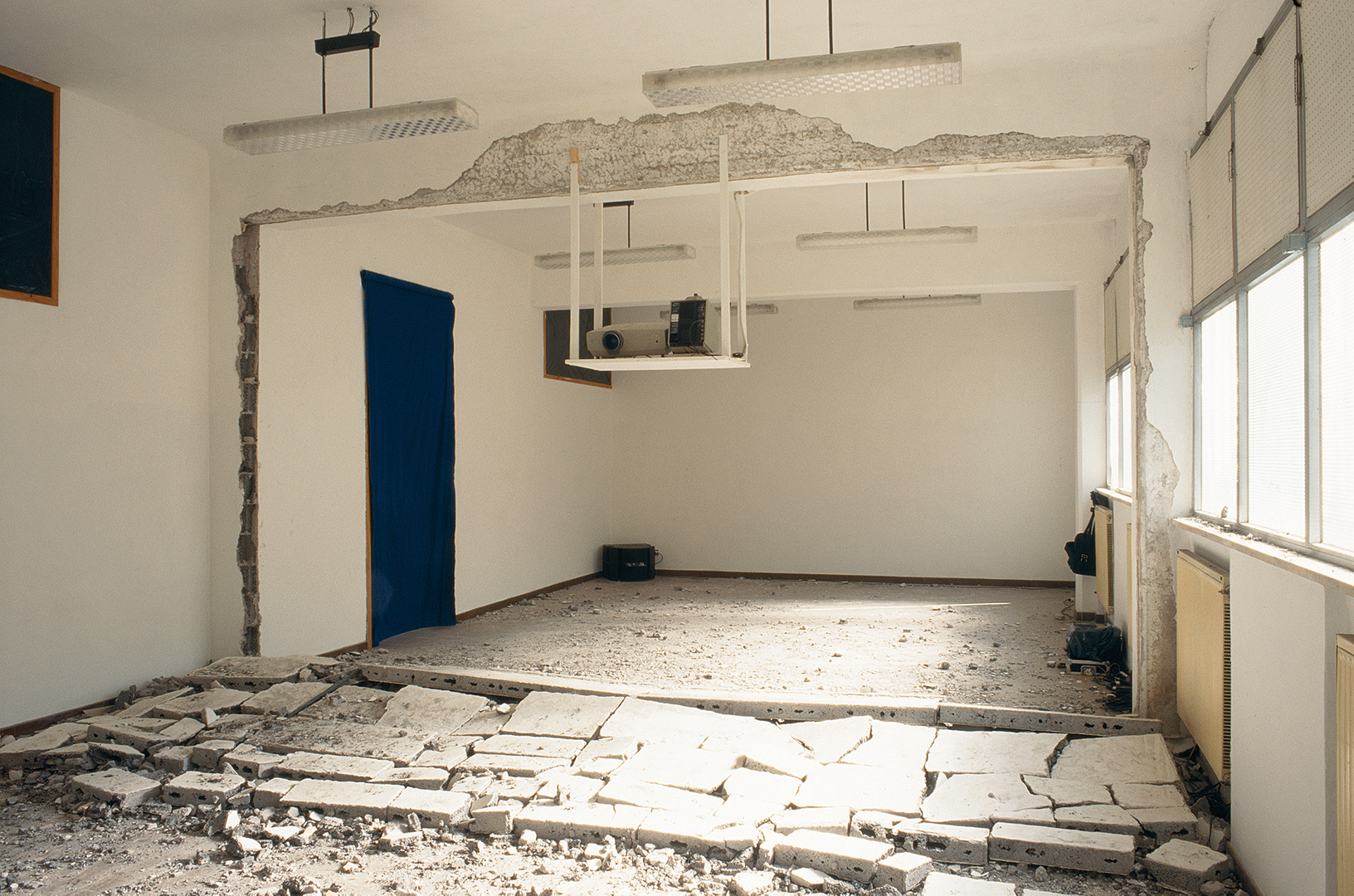FATICA N1
1996 – SPAZIO FILTRO EXHIBITION – EX TEATRO DEGLI ARTISTI, ROME
Using two video cameras, Daniele Puppi films his actions as he knocks down a partition wall in a former school in Via San Francesco di Sales in the Trastevere district of Rome, It’s 1996 and this is his first work. Puppi then projects both films of his performance onto the two end walls of the same site, accompanied by a faithfully-reproduced sound recording of his hammer as it gradually demolishes the wall, smashing it to pieces, with the plaster falling to the floor.
Daniele Puppi’s Fatica n. 1, a video installation created when the artist was only 25 years old, is a striking and inventive presentation of two essential and recurring elements of his art: body and space. The way in which the artist’s body transforms and invades the space while he demolishes the wall radically changes the physical state of the site in question. Indeed, the artist’s body becomes a subjective point of reference, from which he develops his knowledge, while the space around him is conceived as an objective location within which he compares, measures and defines each moment of his artistic experimentation, hence its importance becomes crucial for it. Fatica n.1 originated as a simple and practical proposal: the artist could use the site of the former school in Via San Francesco di Sales provided that he knocked down a partition wall in exchange for the loan of the space. Puppi immediately took the proposal as a starting point to work on, making it the central pivot around which he developed a clear, direct expression of his artistic orientation.
Knocking the two rooms into one enabled him to increase the space, change the perspectives and multiply the viewpoints within the site, whilst simultaneously analyzing his existence in the world via the physical observation of the making. In the video images the artist tests each possible alternation and amplify the intrinsic potentialities of the immediate strategy. Puppi demonstrates an ability to identify material textures, he feels their potential and suggests new ways of using them in a wider vision of existence. It is a form of knowledge in which manifold points of view come together to render a clearer and more genuine image of the world. Puppi sees beyond the obvious, beyond apparent obstacles: he aims to move from solid material to lighter one, to finally proceed into a thin material. It was no coincidence that the exhibition was entitled Spazio Filtro.



